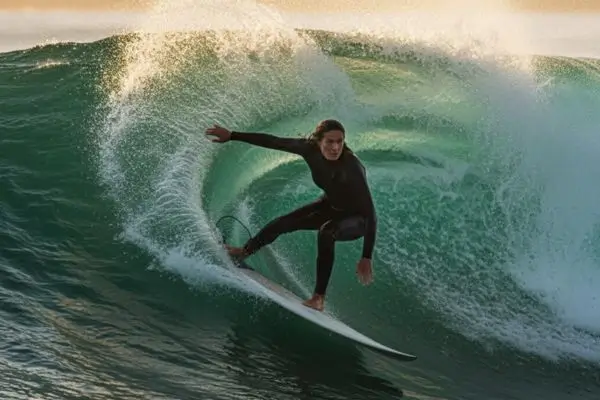Turning is one of the most exciting milestones in surfing. For many women who start their journey in the water, the first successful turn is the moment when surfing becomes more than just riding a wave — it becomes an expression of style, flow, and control. Understanding how to shift weight, guide the board, and use the wave’s power transforms a straight ride into a dynamic and fun experience.
The Role of Turns in Surf Progression
Turns are not just advanced maneuvers. Even simple direction changes give beginners more confidence and allow them to stay on the best part of the wave. Learning these basics early helps women surfers avoid frustration and build the foundations for bigger challenges later on.
Types of Turns Every Surfer Should Know
There are different kinds of turns, each with a unique role in riding waves:
- Bottom Turn: The foundation of all maneuvers, performed after dropping down the wave face to redirect back up.
- Cutback: A graceful turn back toward the breaking part of the wave to regain power.
- Snap: A quick, sharp turn at the top of the wave to release energy.
- Carve: A flowing, drawn-out turn, often used to maintain speed and rhythm.
Beginners don’t need to master them all at once. Starting with simple bottom turns and gradually adding cutbacks helps create a natural progression.
Setting Up for the Turn
Successful turning starts before the maneuver itself.
- Reading the Wave: Look where the wave is steep and where it flattens out. Position yourself on the open face to have space to turn.
- Foot Placement: Keep your stance centered, with your back foot slightly over the fins for better control.
- Eyes First: Your body follows your gaze. Always look toward where you want the board to go.
Weight Shifting and Body Movement
Turning is less about strength and more about fluid body movement.
- Initiating the Turn: Use your shoulders and head to lead, followed by your hips.
- Front Foot vs. Back Foot: Pressing the front foot guides direction, while the back foot controls sharpness and angle.
- Smooth Transitions: Keep movements gradual; jerky motions cause loss of balance.
Practicing on Small Waves
Small, gentle waves are the perfect playground for practicing turns. They allow beginners to experiment without fear of wipeouts. Many women surfers find confidence by practicing in waist-high waves before moving to faster, more powerful conditions.
Common Mistakes to Avoid
- Turning with Arms Only: The whole body must engage, not just the upper half.
- Looking Down: Always look to the section of the wave ahead, not at the board.
- Too Much Pressure on the Nose: This slows the board and makes turning harder.
Drills to Improve Turning Skills
- Flat-Water Drills: Practice leaning and weight shifts while sitting on the board in shallow water.
- Skateboard Training: Using a surfskate on land mimics wave movement and builds muscle memory.
- Repetition in Whitewater: Even practicing small direction changes after catching foam waves helps refine balance and control.
Turning techniques are where surfing starts to feel creative. For women surfers, learning to link turns creates flow and confidence, while also opening the door to more advanced maneuvers in the future. Each successful turn becomes a reminder that surfing isn’t just about standing up — it’s about dancing with the wave.




